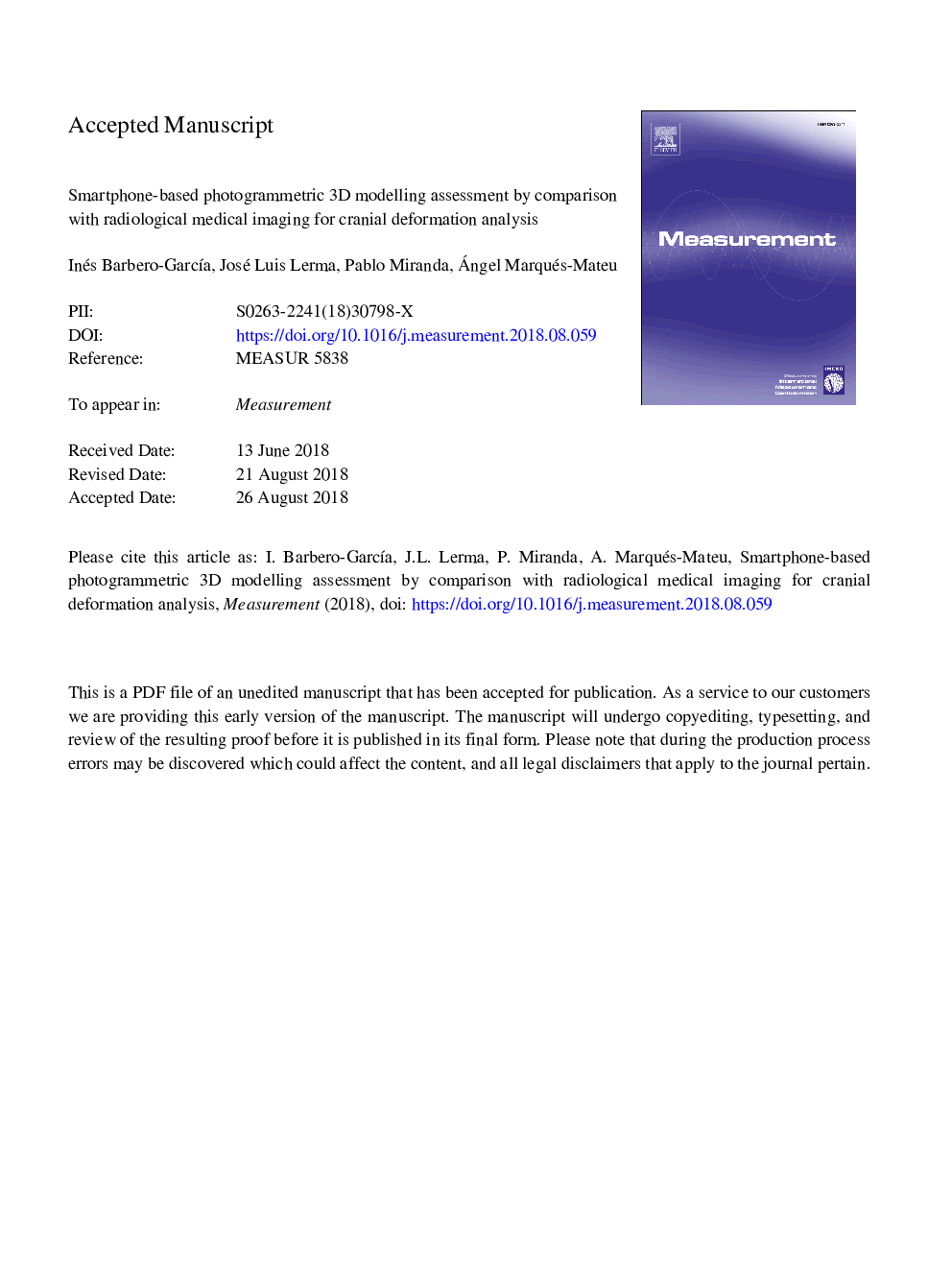| Article ID | Journal | Published Year | Pages | File Type |
|---|---|---|---|---|
| 9953674 | Measurement | 2019 | 16 Pages |
Abstract
Cranial deformation in infants is a common problem in paediatric consultations. The most accurate medical diagnostic imaging methodologies are Computed Tomography (CT) and Magnetic Resonance Image (MRI). However, these radiological imaging technologies involve high costs and are invasive, especially for infants. Therefore, they are only used for severe cases, while milder cases are evaluated using less precise methodologies, such as callipers or measure tapes. The use of smartphone-based photogrammetric 3D models has been presented as a possible alternative to extracting accurate and complete external information in a low-cost, non-invasive manner but its accuracy is still to be tested. In this study, photogrammetric and radiological cranial 3D models have been obtained for a set of 10 patients. In order to compare them, the distances between model surfaces have been calculated. Results show an overestimation of the photogrammetric models up to 3.2â¯mm due to both hair and usage of caps. However, differences in shape, given by the standard deviation of the distances are below 1.5â¯mm for every patient. The accuracy of low-cost smartphone-based photogrammetric models has been found to be comparable to medical diagnostic imaging methodologies used for cranial deformation analysis.
Related Topics
Physical Sciences and Engineering
Engineering
Control and Systems Engineering
Authors
Inés Barbero-GarcÃa, José Luis Lerma, Pablo Miranda, Ángel Marqués-Mateu,
